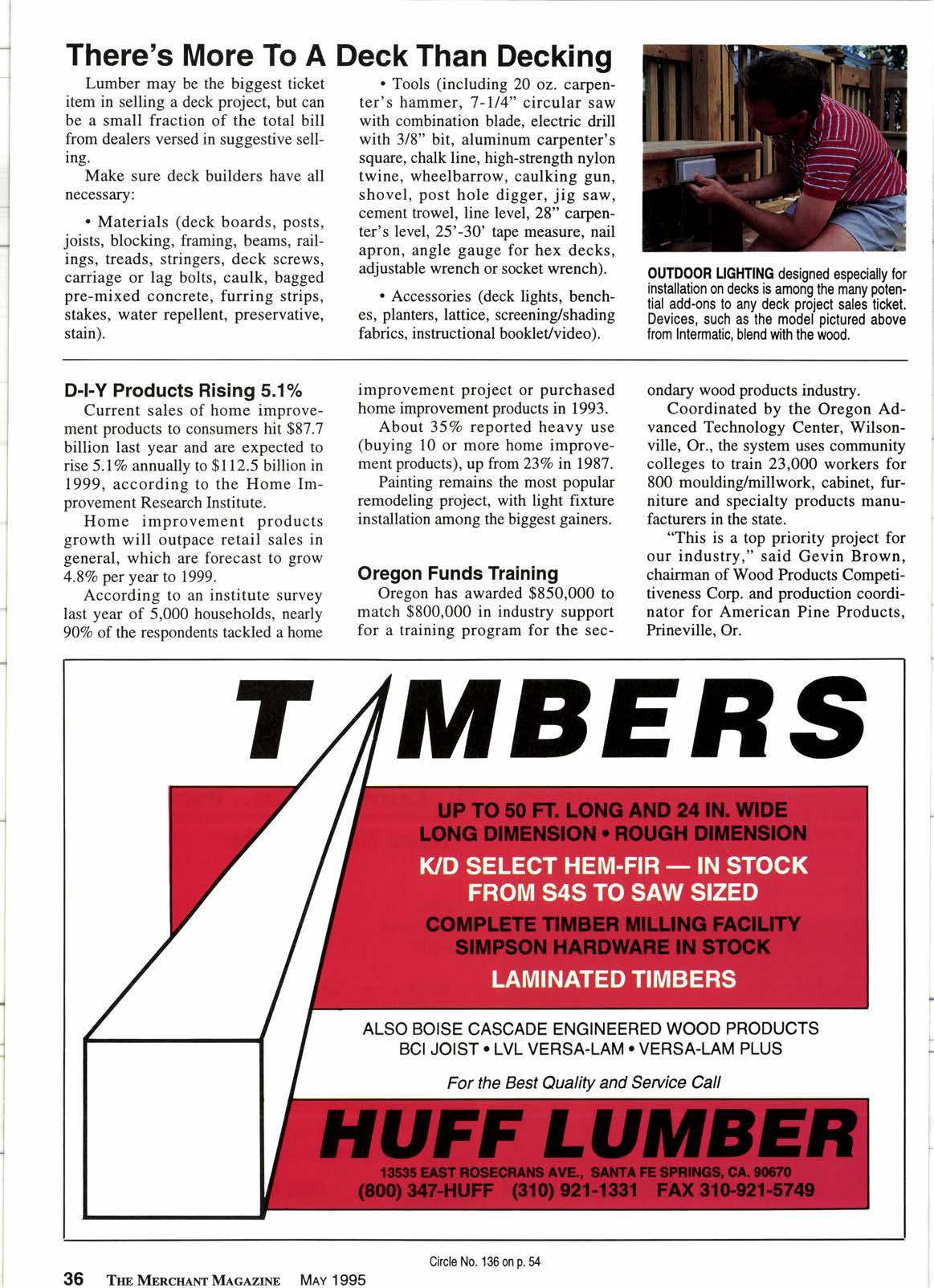
2 minute read
Golumn repair vs. replacement
rnHE COLUMNS across the front of the house are I beginning to look a little ragged. The paint is chipping, a few are beginning to rot at the base. The homeowner wants to know if he can repair them or if he'll be forced to replace one or all of the columns.
Where do you draw the line between repairing and replacing columns? The first consideration is the average lifespan of a column - and if it is still under warranty. "It varies, depending on who manufactured the column, how it was constructed, how it was installed," says Mel Fuller, Melton Classics, Lawrenceville, Ga. "Most good architectural columns are guaranteed for l0 years. Stock house columns will last anywhere from nine months to 90 years, depending on how well you take care of it."
Life expectancy "varies with location, protection and how it was installed and painted," agrees Ken Hendricks, Henderson, Black & Greene, Troy, Al.
Ventilation is the most critical factor in how long a column will last. "The biggest problem is ventilation, as far as whether it will split or rot out," Fuller says. "Moisture is a column's Number One enemy. Good ventilation equalizes the moisture between the inside and the outside of the column and doesn't let moisture build up.It forms a chimney-type effect, as if you blocked the top of the chimney."
"It must be ventilated when it's installed, so air can pass up through the shaft," Hendricks explains. "If the column was improperly installed or if a latex paint was used instead of an oilbase paint, rotting will be accelerated."
Unfortunately, many times people unwittingly plug up all the holes in a column during installation or painting. "If they're redwood columns, they will bleed, actually leaking tannic acid through the paint," Fuller says.
As a result, Melton Classics and other companies will only guarantee columns that are installed per their instructions.
"Once the rot's gotten into the shaft, you should replace it, because it's gonna go eventually," Fuller warns. "Sometimes you can repair it. Sometimes you can replace just the pedestal. It's a judgment call."
Storv at a Glance
Advise d-Fyers when to repair or when to replace their columns importance of proper installation suggestions for maintenance.
If only the base is rotted, it may be easier just to install a synthetic replacement base. "Measure around the shaft with a tape measure and divide by 3.la (pi) to get the size," Fuller advises. "You can get a polyurethane or fiberglass base, but make sure it's at least as tall as the old one so you don't come up short."
Instead of a replacement base, homeowners sometimes construct a small brick or concrete plinth below the shortened column. "But by the time you've done all that, the expense and time will probably be even greater (than for replacing the base)," Hendricks says.
For minimal rotting or splining, the affected area may be gouged or routed out and repaired with a wood filler.
In years past, a nice paint job provided good protection for columns, but, says Hendricks, "you can't protect wood any longer with paint. All the good stuff's been taken out of paintlead, linseed oil."
If the column must be painted and the paint won't stay on or tends to flake ofl most likely the cause is moisture. The column must be ventilated, allowing 60 to 90 days to get the moisture out, and then repainted.
It may be possible to drill holes in the column and install "midget louvers," though this isn't a permanent fix since it is best to have airflow through the top of the cap.
Finally, the number of columns on a home may also be a factor in determining whether or not to replace them, since older custom columns may be difficult to match. "If the bottom foot is rotted out on one of 24 columns, you might try to match it as best you could. If two of four are rotten, you might replace them all," says Hendricks.










